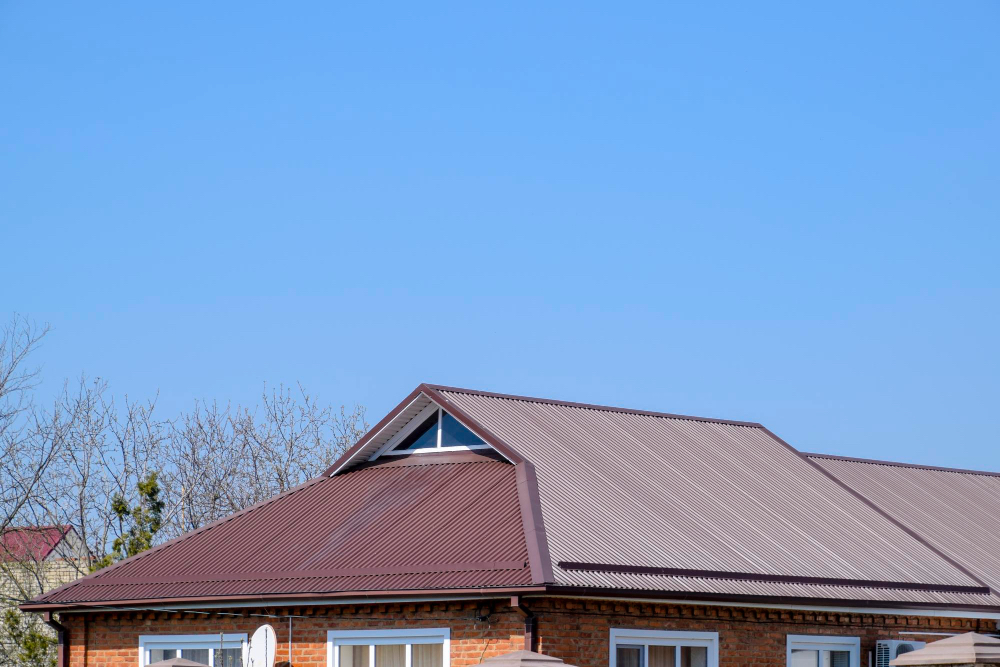Last updated on
In an age where climate change is no longer a future predicament but a current reality, every choice we make as individuals and as a society has an impact on the environment. From the cars we drive to the food we eat, our lifestyles shape the world we live in.
However, one area that’s often overlooked yet incredibly influential in the context of environmental consciousness is the construction industry. Specifically, the materials we use to build and maintain our homes and buildings play a crucial role in shaping our environmental footprint.
The environmental benefits of choosing eco-friendly roofing materials cannot be overstated. Not only do they contribute to a reduction in energy consumption and carbon emissions, but they also promote a healthier living environment by ensuring better air quality within structures.
This post will explore the multifaceted reasons why opting for sustainable roofing is not just a trend, but a fundamental move towards a greener future.
Environmental Benefits

Eco-friendly roofing materials are designed to last longer, which means they need to be replaced less frequently than traditional options. This can translate to less waste and resources used over time. Here’s a detailed look at how choosing green roofs can benefit the environment.
Energy Efficiency
One of the most significant environmental benefits of eco-friendly roofing is its capacity to improve a building’s energy efficiency. Green roofing options, such as reflective roofs or those that incorporate photovoltaic technology, can significantly reduce the amount of energy needed to cool or heat a building.
They do this by reflecting more sunlight and absorbing less heat, thus lessening the reliance on internal climate control systems that contribute to high energy consumption and, subsequently, larger carbon footprints. And, at any point in time, on the Equity Roofing website, and other similar ones, you can read more about this. That way, you can make an informed decision and contribute to the conservation of energy resources.
Roofing materials, particularly those that require intense manufacturing processes, can have high embedded energy, which directly correlates to increased carbon emissions. Sustainable options, like recycled shingles or metal roofing, often have a lower embodied energy, meaning they require less energy to produce and, as a result, lead to lower carbon emissions during their lifecycle.
Many eco-friendly roofing materials are made from sustainably sourced or recycled materials. By using materials like reclaimed wood or recycled metal, you’re reducing the demand for new resources, which in turn helps to conserve natural resources.
Additionally, the process of sourcing these materials often involves less harmful impacts on the environment, such as reduced deforestation and mining, which contribute to the preservation of ecological systems.
Considering the impact of our roofing choices on the environment helps us begin integrating sustainability into the very fabric of our homes and communities. Whether you’re a homeowner, a landlord, or a developer, making the move towards eco-friendly roofing materials is a tangible way to reduce your environmental impact and contribute to a healthier, more sustainable future.
The decision to use eco-friendly roofing materials is an essential step towards building and maintaining an environmentally conscious living or working space. Understanding the core benefits, which include reduced energy consumption, a smaller carbon footprint, and better health for building occupants, can help you make informed choices that positively impact not just the structure itself, but also the community and world around it.
If you’re looking to make a positive environmental impact with your construction projects, the roof is an excellent place to start. Not only does the right choice in roofing materials enhance the structural integrity and aesthetic appeal of the building, but it can also go a long way in ensuring that we leave behind a healthier planet for future generations. Start small, think big, and let your roof be a beacon of environmental stewardship.
Table of Contents




